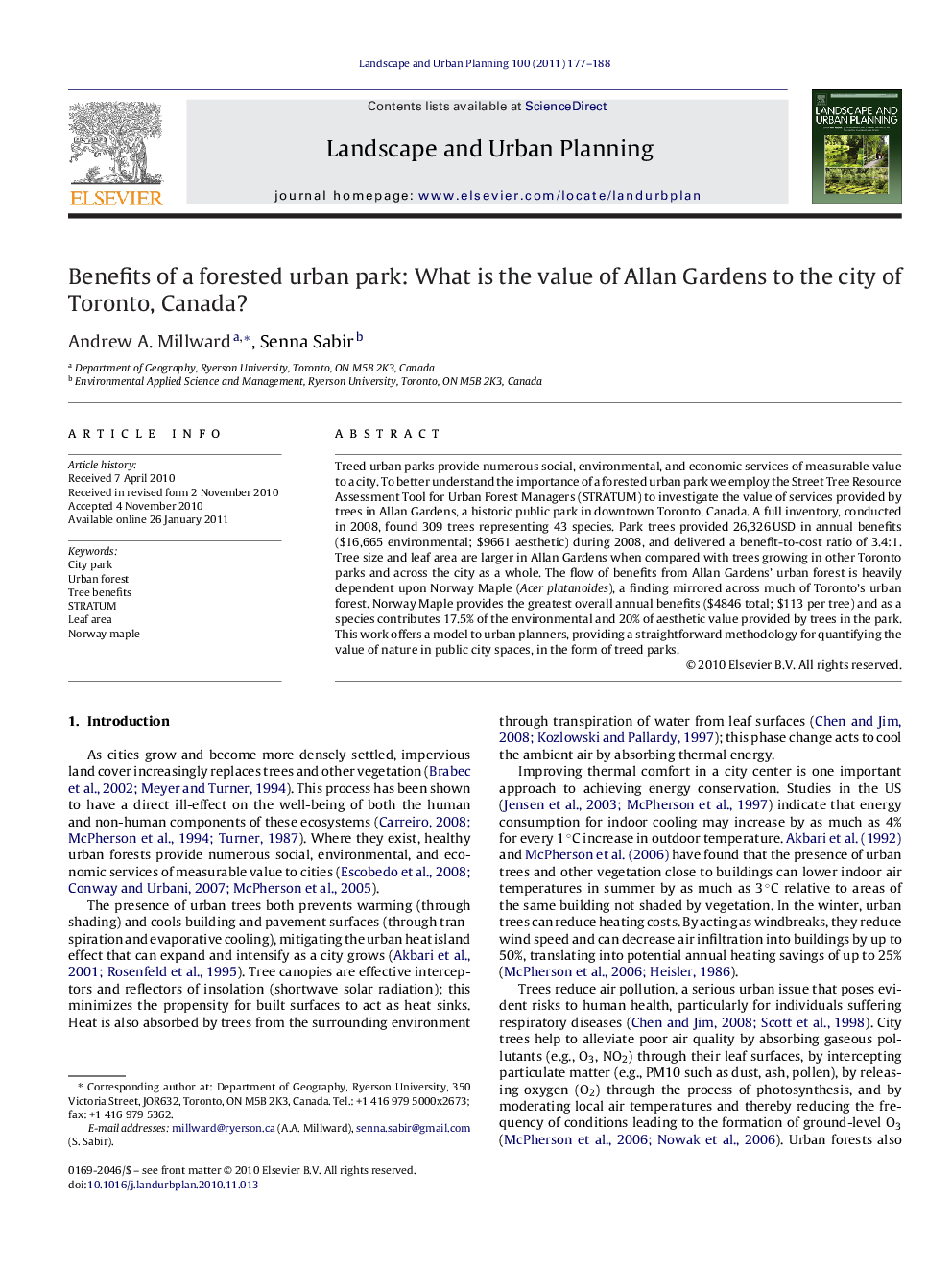| Article ID | Journal | Published Year | Pages | File Type |
|---|---|---|---|---|
| 1049872 | Landscape and Urban Planning | 2011 | 12 Pages |
Treed urban parks provide numerous social, environmental, and economic services of measurable value to a city. To better understand the importance of a forested urban park we employ the Street Tree Resource Assessment Tool for Urban Forest Managers (STRATUM) to investigate the value of services provided by trees in Allan Gardens, a historic public park in downtown Toronto, Canada. A full inventory, conducted in 2008, found 309 trees representing 43 species. Park trees provided 26,326 USD in annual benefits ($16,665 environmental; $9661 aesthetic) during 2008, and delivered a benefit-to-cost ratio of 3.4:1. Tree size and leaf area are larger in Allan Gardens when compared with trees growing in other Toronto parks and across the city as a whole. The flow of benefits from Allan Gardens’ urban forest is heavily dependent upon Norway Maple (Acer platanoides), a finding mirrored across much of Toronto's urban forest. Norway Maple provides the greatest overall annual benefits ($4846 total; $113 per tree) and as a species contributes 17.5% of the environmental and 20% of aesthetic value provided by trees in the park. This work offers a model to urban planners, providing a straightforward methodology for quantifying the value of nature in public city spaces, in the form of treed parks.
Research highlights▶ The value of environmental and aesthetic benefits arising from trees in a forested city park is estimated using the Street Tree Resource Assessment Tool for Urban Forest Managers (STRATUM). ▶ A 3.4:1 benefit-to-cost ratio exists for trees growing in a downtown urban park located in Toronto, Canada. ▶ Norway Maple (Acer platanoides) provides the greatest single-species environmental and aesthetic benefits in Allan Gardens park and across the City of Toronto.
